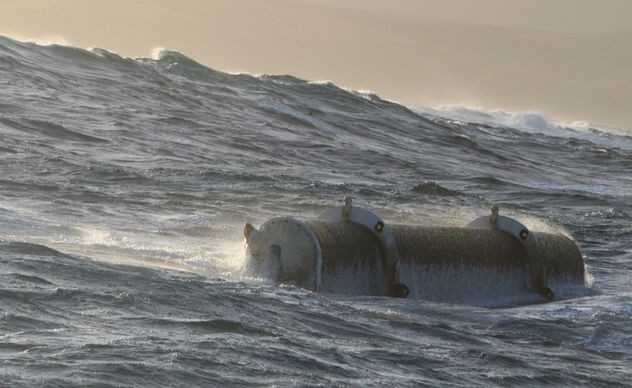New technology for aquamarine power generation
Aquamarine Power’s Oyster wave power technology converts the energy in near-shore ocean waves into sustainable electricity. The technology is currently being trialed in Scotland (United Kingdom).

The challenge
Over 70 percent of the earth is covered by water, which is an endless source for sustainable energy. By creating energy from waves and integrating a larger share of energy production in the ocean, the use of fossil fuels can be decreased and thus the environmental impact can be reduced.
The innovation
A new ocean energy technology has been developed by Aquamarine Power to produce green electricity. The technology aims to capture the energy of waves and convert it into clean sustainable electricity, i.e. integrating energy production in the ocean.
The Oyster wave power device is a buoyant, hinged flap situated, about 500 meters from the shore and is attached to the seabed at a depth of 10 to 15 meters. Since the Oyster is located close to the shore, a large portion of the ocean's energy can be captured while avoiding heavy storms.
Energy generated from waves has the potential to produce 80 000 TWh of electricity per year. Oyster's hinged flap is almost completely under water and pitches backwards and forwards in the waves. The movement of the flap drives two hydraulic pistons which pump high pressure water to shore by an undersea pipeline to drive a conventional hydro-electric turbine.
SSE (Scottish and Southern Energy), Scottish Enterprise and ABB are all major shareholders in the business.
Why did it work?
The Oyster technology has potential since it uses the ocean's energy to produce electricity, which is an endless sustainable resource. The technique can also generate large amounts of electricity, which means that the use of fossil fuels can be reduced.
Further deployment
Research and development team at Aquamarine Power are continually developing new technologies to further develop the Oyster and refine its design. Since the technology has not yet proven its ability to work in its final form under the expected conditions, the innovation is estimated to be level 6 on the TRL scale.
Links:The websiteThe storyHow it works